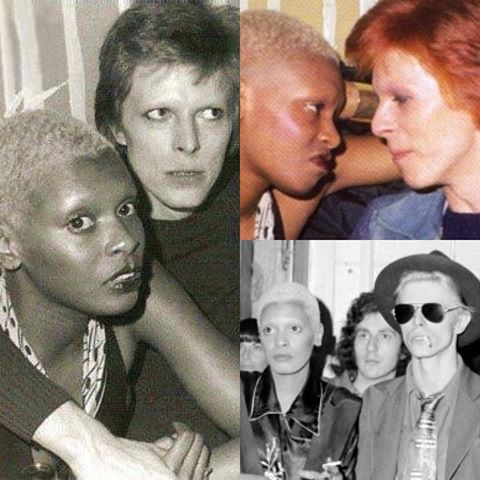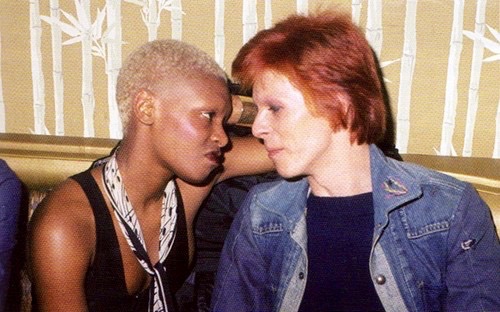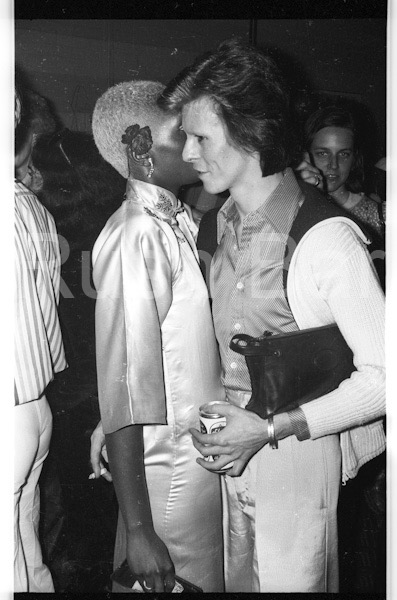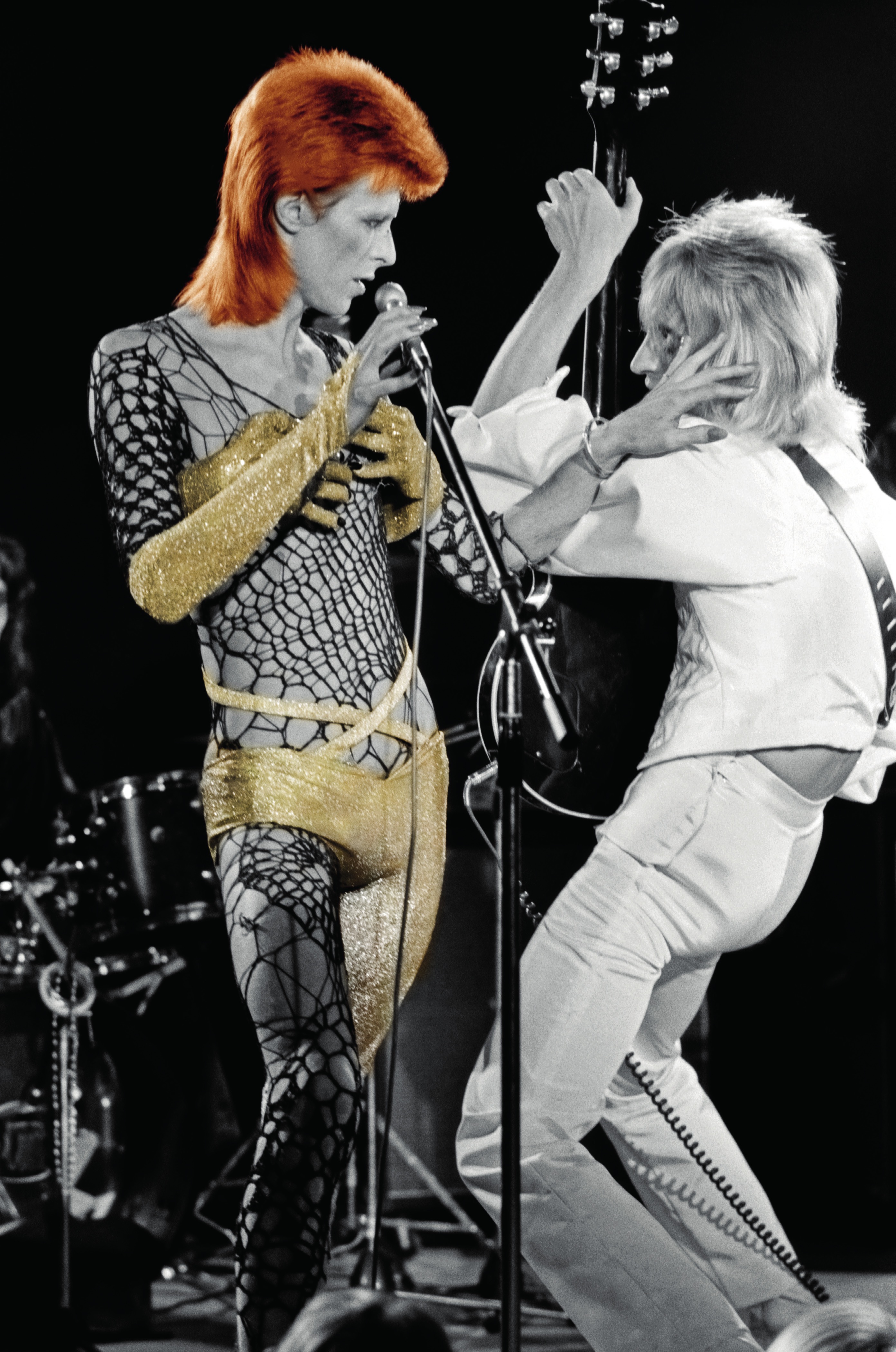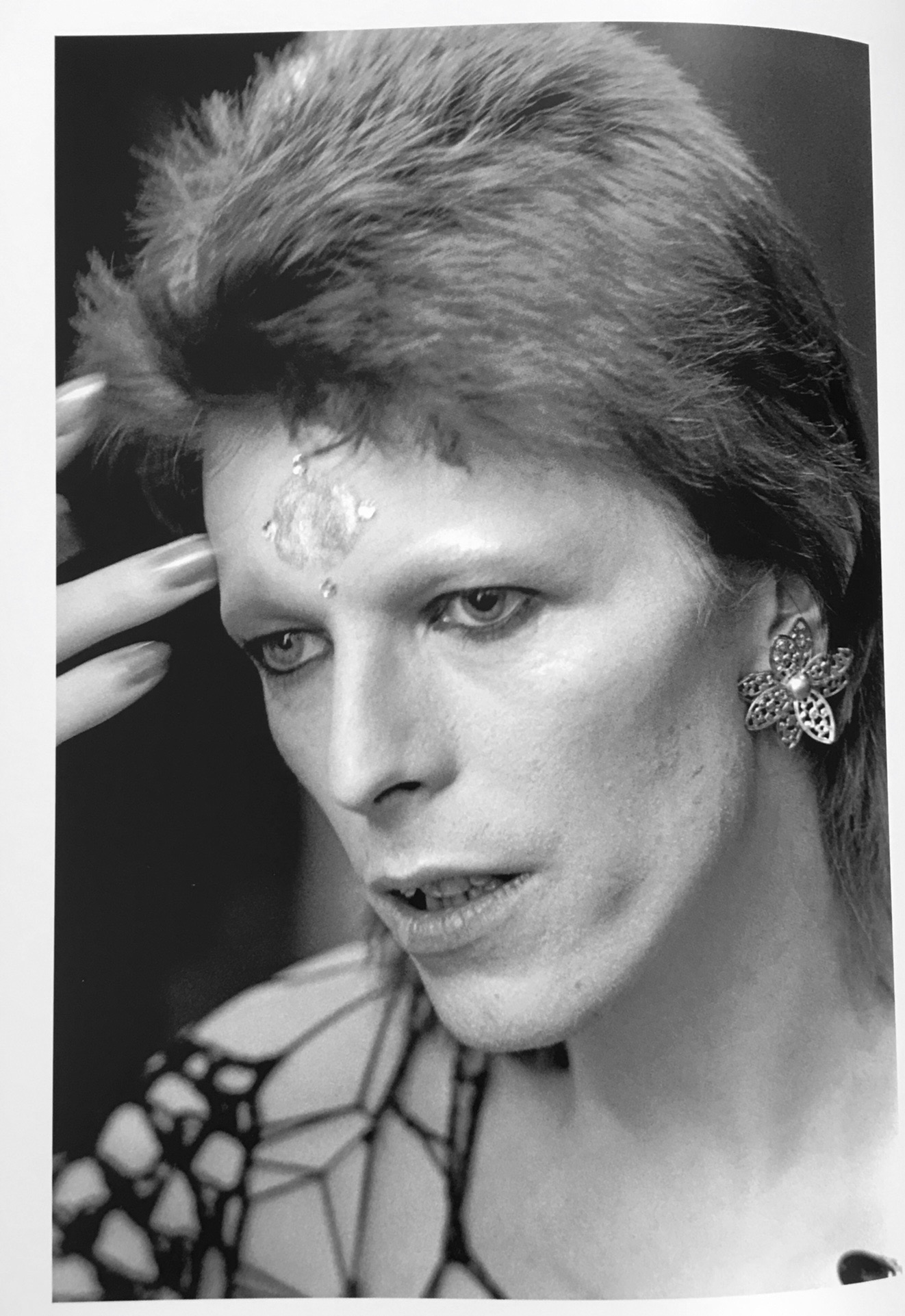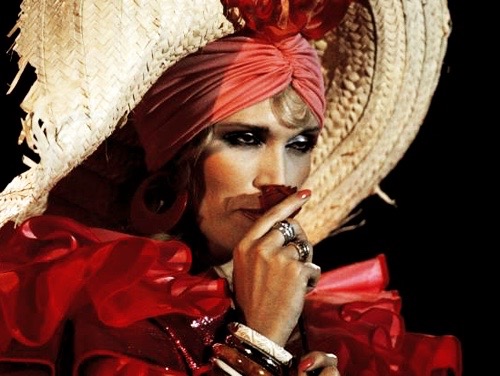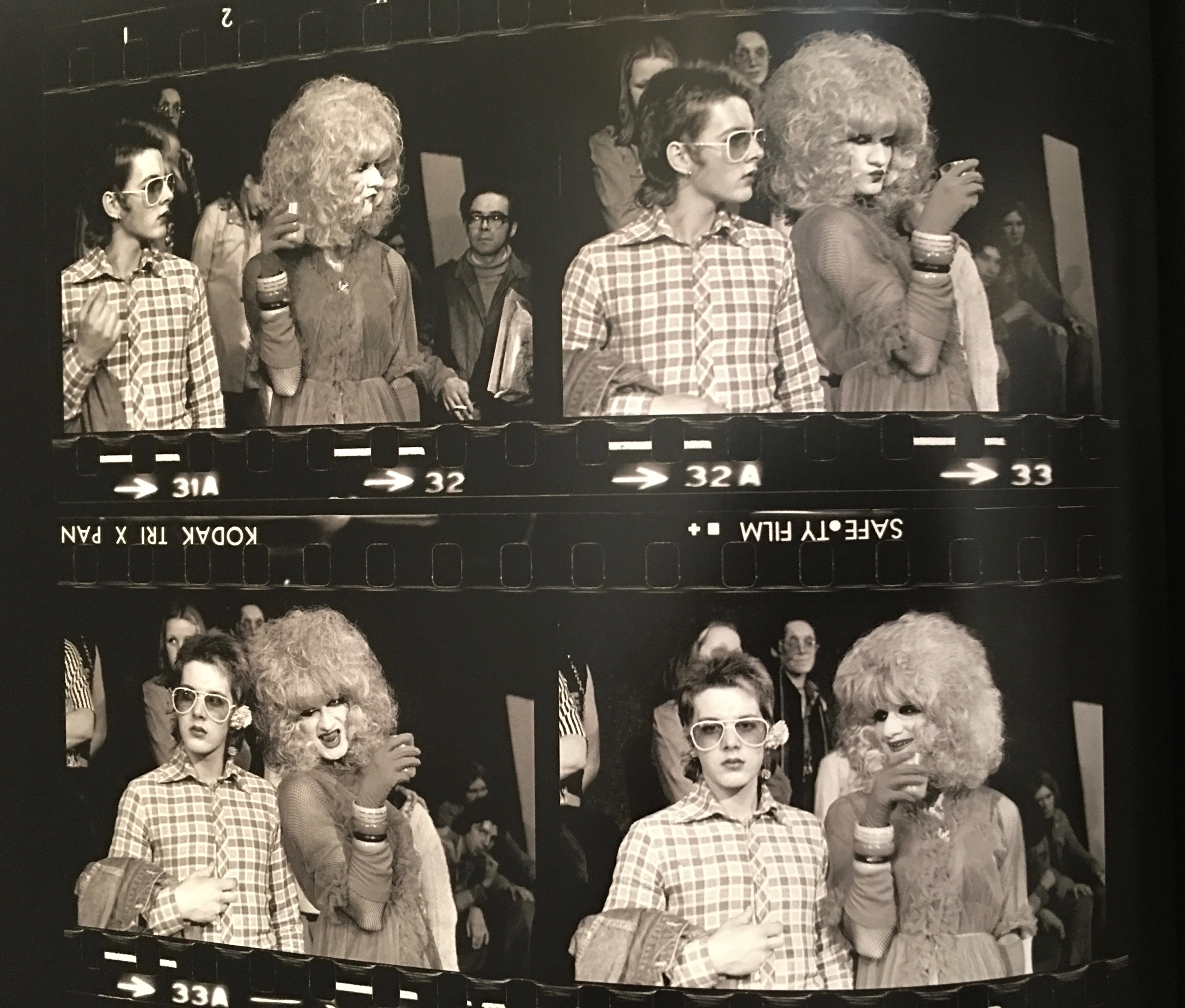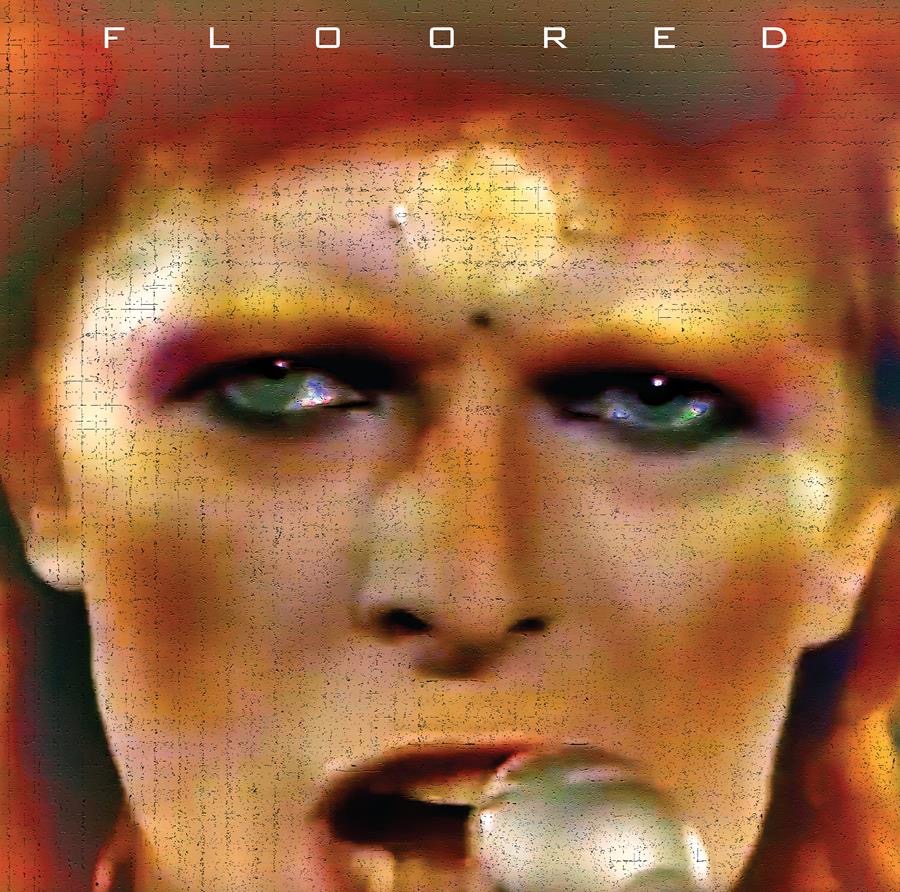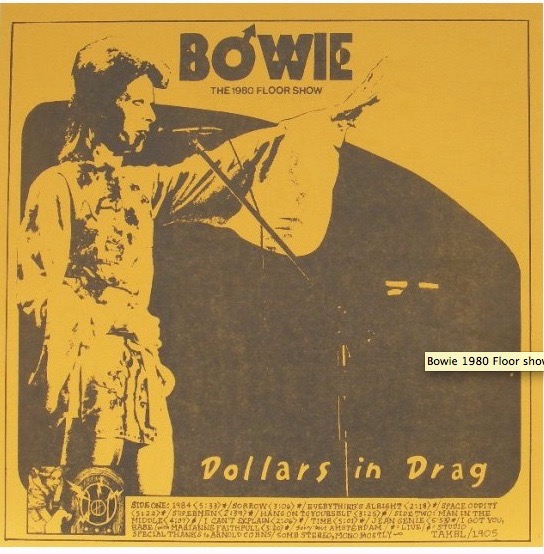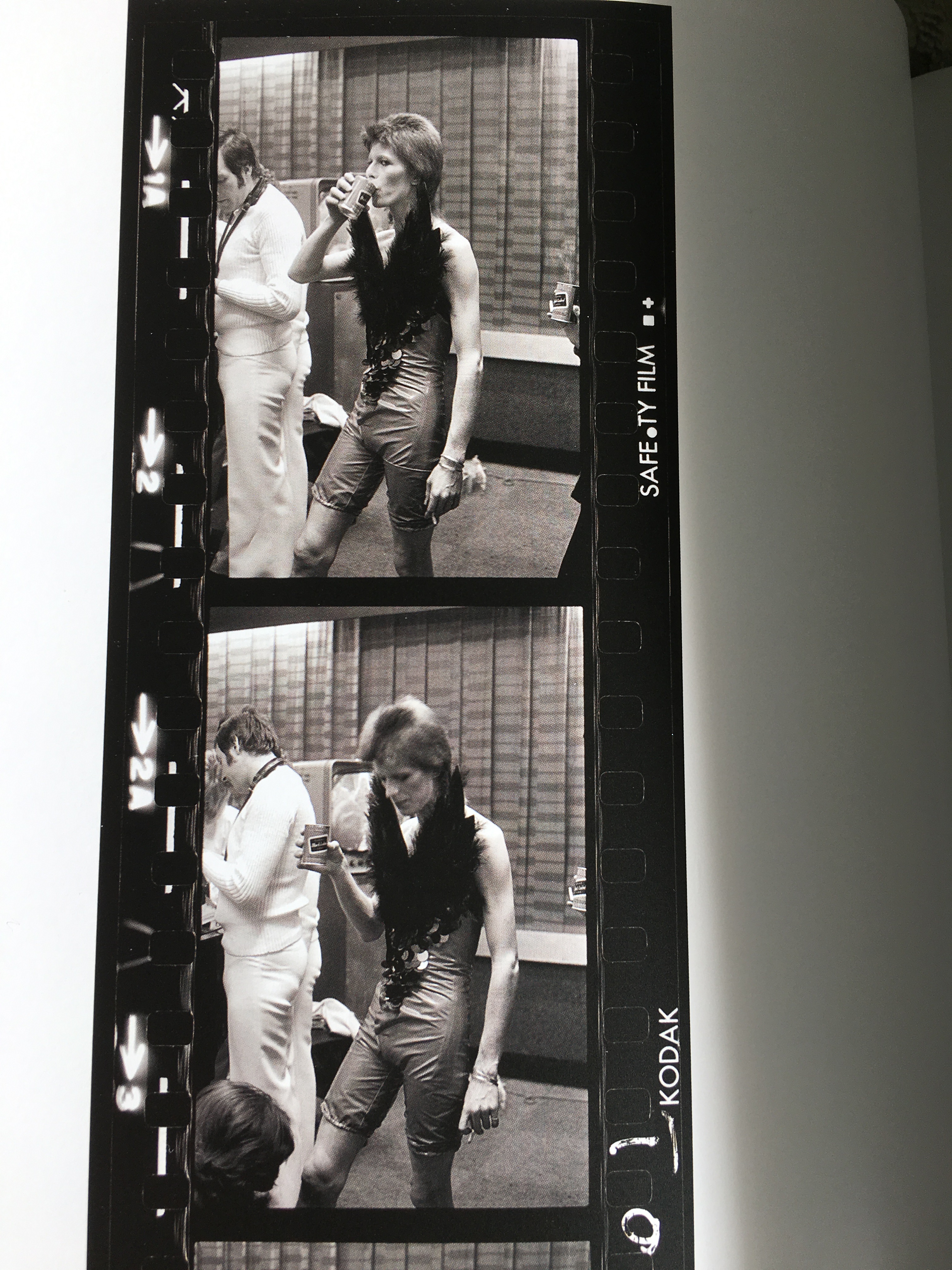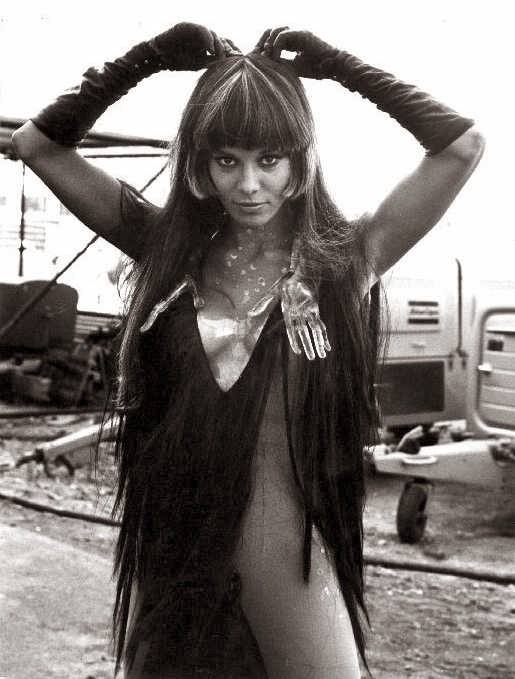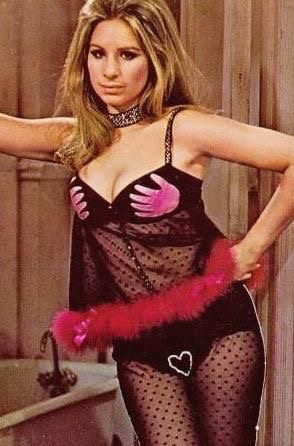By Madeline Bocaro ©
https://linktr.ee/madelinerocks
© Madeline Bocaro, 2018. No part of this site may be reproduced in whole or in part in any manner without the permission of the copyright owner.
Join my ‘Bowie 1980 Floor Show’ Facebook Group: https://www.facebook.com/search/top/?q=bowie%201980%20floor%20show
A special edition of NBC’s American TV show, The Midnight Special was recorded on 18, 19 & 20 October 1973 in London, and broadcast on 16 November 1973 in America only.
The 1980 Floor Show (a pun on George Orwell’s futuristic novel ‘1984’) was Bowie’s first appearance since his infamous sudden retirement of Ziggy Stardust on 3 July 1973 at the Hammersmith Odeon. It was also his final appearance as Ziggy. The 1980 Floor Show was a spectacular stage production, filmed over 3 days at The Marquee Club in Soho, London.
Bowie was approached by television producer, Burt Sugarman to create a show for The Midnight Special rock series, which aired at 1:00 am Eastern time. David agreed, only if he could have complete control of the entire show, which usually presented several different bands. Bowie’s idea was a highly theatrical cabaret extravaganza featuring himself plus two other bands of his choosing performing in a futuristic setting. Bowie had complete artistic control. British newspapers wrote that the Americans had netted the ‘pop scoop of the year’ and bemoaned the fact that the show would not be aired on U.K. TV. Apart from segments for Top of the Pops it has never been fully screened in the U.K., probably because Bowie felt that it was, “shot abysmally.”
The show is unfortunately still not available commercially in any form, although there are many bootlegs, including over 6 hours of outtakes.
The first day of The 1980 Floor Show was filmed at a studio. The actual filming at the Marquee was done on the 19th & 20th October. Bowie personally chose the intimate venue after considering the possibility of a full-scale live concert (rejected by NBC as too expensive).
“There were a lot of clubs to go to in the Soho scene in the 60’s but The Marquee was top of the list, because musicians did hang out there, pretending to talk business and picking up gigs – but picking up girls mostly. One of my keenest memories of The Marquee in the ’60’s was having a permanent erection because there were so many fantastic looking girls in there, it was all tourists, especially in summer, all flocking to London to get an R&B star. My final performance of Ziggy Stardust was at The Marquee. I wanted to go back there because I had so many good memories over the years. We changed the place completely and for 3 days we filmed what became ‘The 1980 Floor Show’. I had The Troggs on with me and then got Marianne Faithfull to duet with me on a version of Sonny & Cher’s ‘I Got You Babe’. I dressed Marianne in a nun’s habit with the back cut out, and I dressed as the Angel of Death!” – Bowie
The Marquee was a famous London club where Bowie had performed as a support act. There he had watched many R&B giants of the 1960s. The club outgrew its first location, on Oxford Street and moved to 90 Wardour Street in 1964, where important bands (the Rolling Stones, Yardbirds, The Who) were showcased, along with Jimi Hendrix, the Byrds, the Lovin’ Spoonful and visiting American bands. The venue has since been demolished.
Although famous, the Marquee in 1973 was small, cramped and shabby. Much to the horror of the Marquee owner, the stage and backdrop were completely rebuilt and the walls and ceilings repainted black for Bowie’s 1980 Floor Show.
In the Marquee’s October 1973 program, a mysterious listing for 18-20 Oct. showed no artist name and instead read:
“LUCKY FOR SOME…UNLUCKY FOR MANY! On Thurs, Fri & Sat 18th, 19th & 20th October NBC T.V. have taken the Marquee for FILMING & LIVE Recordings of some Very Special Artistes. There will be a very few tickets available for each of the evenings…Details will be posted within the Club.”
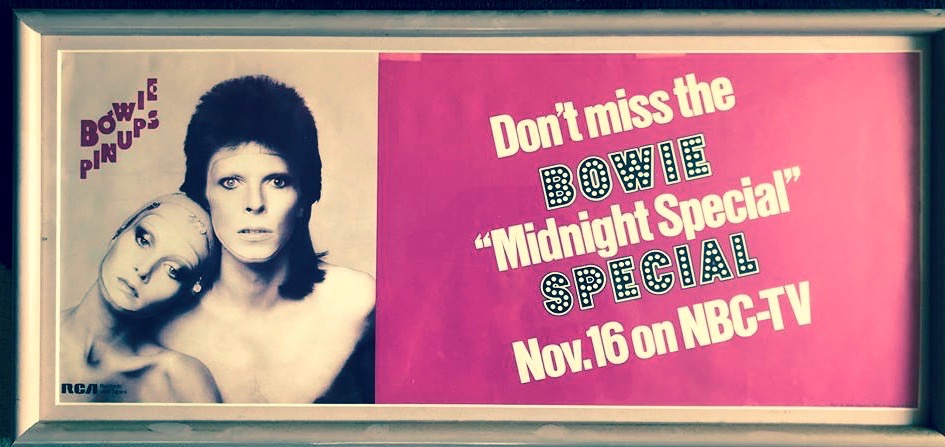
Admission was by invitation only. The attendees were 200 International David Bowie Fan Club members, rock luminaries and music journalists – all keen to see Ziggy arise to perform one last time. Included in this exclusive audience were Bowie’s wife and son Angie and Zowie, Tony Visconti and his wife, singer Mary Hopkin, Lionel Bart, Mick Rock, Dana Gillespie, photographers Terry O’Neill and Mick Rock, David’s hair and wardrobe girl Suzi Fussey (who later married Mick Ronson), Long John Baldry, Cherry Vanilla, Leee Black Childers and Wayne (now Jayne) County.
The show also featured Marianne Faithfull, The Troggs and a unique Spanish flamenco rock group called Carmen. This was to be the last time that Mick Ronson and Trevor Bolder played with Bowie as Spiders.
Bowie’s Free For All – Chris Welch (Melody Maker – 1973)
At The Marquee – Mick Rock (Music Scene – January 1974)
Also see: Do the Fandango: The Story of Carmen
(Our exclusive interview!!)
Bowie’s performance on Saturday 19th October went on for 10 hours. Because of the small size of the Marquee, only two cameras were used. Each song was shot up to five times to allow for camera re-positioning and the satisfaction of Bowie and the film crew. The whole thing was – according to Bowie, “shot abysmally.” Between takes, despite having just recovered from a the flu, Bowie laughed with the audience and signed autographs.
As well as featuring popular Ziggy Stardust songs, the show previewed material from upcoming Bowie albums, PinUps (1973) and Diamond Dogs (1974). The PinUps album cover photo of Bowie with 60s ‘It Girl’, Twiggy (shot by her boyfriend – photographer Justin de Villeneuve) was planned to be a Vogue magazine cover. Bowie would have been the first man on the cover of Vogue. However, Bowie opted to use the image for his album cover instead.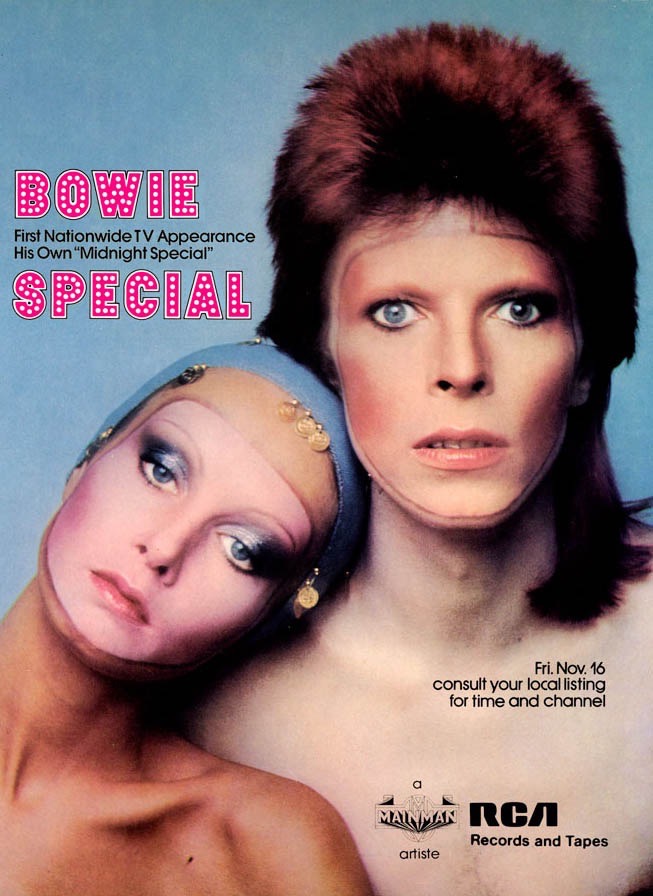
“[Twiggy and I] met Bowie a few times socially, and he mentioned that he wanted to be the first man on the cover of Vogue. I called them to suggest this, with Twiggy, of course, and after a bit of a hoo-ha, they agreed.
Bowie was working on PinUps in Paris, so we flew there to do the shoot. When Twigs and Bowie were together and lit up, I looked through the viewfinder and realised that David was pure white, whereas Twiggy was tanned from a holiday in Bermuda. There was a moment of panic because I knew it would look bizarre; but the makeup artist suggested drawing masks on them, and this worked out even better. I remember distinctly that I’d got it with the first shot. It was too good to be true.
“When I showed Bowie the test Polaroids, he asked if he could use it for the Pin Ups record sleeve. I said: ‘I don’t think so, since this is for Vogue. How many albums do you think you will sell?’ ‘A million,’ he replied. ‘This is your next album cover!’ I said. When I got back to London and told Vogue, they never spoke to me again.”
– Justin de Villeneuve
The chocolate brown suit on the back cover, with cuffed baggy trousers was designed by Tommy Roberts’ at his Covent Garden boutique City Lights Studio (tailored by Derek Morton). Mainman launched a billboard campaign on the Sunset Strip in Los Angeles for all their artists; Bowie, Mott The Hoople, Mick Ronson… including a contest in which the winner’s face would replace the blank Twiggy. That’s why, in the final version, “Twiggy” looks a bit strange!
Most of the costumes for the 1980 Floor Show were designed by Bowie and his old friend, Freddie Burretti. The spider-webbed dancers and compere Amanda Lear’s costumes were designed by Natasha Korniloff, as was the webbed Jean Genie costume. Mick Ronson’s outfit for the concert was an angelic white satin suit with cutout sleeves.
The makeup artist for the 1980 Floor Show was Barbara Daly, who later made up Princess Diana on her wedding day. The biggest tragedy is that Diana probably died without ever knowing this!
Daly also created the makeup for the film A Clockwork Orange.
Daly was one of the first superstar make-up artists. She pioneered the smoky eye look and revolutionized cosmetics with her own line. In her days at Vogue magazine, there were no serums and few products. Models did their own makeup. There were very few cosmetics lines – just the old favorites; Max Factor and Elizabeth Arden. Make-up artists were not even credited on the fashion and beauty pages. Barbara has transformed supermodels, royalty, prime ministers and Hollywood stars. Daly also formed partnerships with photographers Helmut Newton, Albert Watson, David Bailey and Lord Snowdon.
Hairstyling was credited to Billy The Kid.
Take Your Time!
The theme of the 1980 Floor Show was the passing of time.
Bowie chose two other bands to perform on the show; The Troggs and Carmen.
Angela Allen-Barr (Carmen), “When the Midnight Special 1980 Floor Show came around, Bowie decided to present it as a staged show, in which the Troggs (Troglodytes) represented the past of music, he represented the ‘now’ of music, and Carmen represented the future.
For his cover of The Merseys song ‘Sorrow’ from his album Pin Ups, Bowie appears on the parquet floor all in white, resembling a pawn in a chess game Amanda wields a long pole wrapped in tinsel. She manipulates dancers in cobwebbed leotards, meant to represent the passing of time on a chessboard represented by the squares of a parquet floor. In the outtakes, Amanda and David banter, quoting lines from Alice in Wonderland.
Here are the never before seen outtakes of Amanda introducing Bowie on The 1980 Floor Show with a convoluted monologue about time travel!
WATCH HERE:
YouTube:
Here is a nice contribution from my dear friend Cherry Vanilla
who helped edit the show:
THE NINETEEN-EIGHTY FLOOR SHOW
… or as I christened it
The Midnight Special Special
by Cherry Vanilla ©
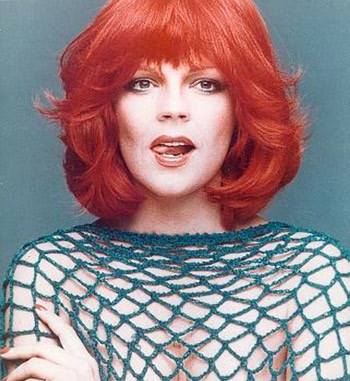
I used all of my experience of making radio and TV commercials on this assignment for Mainman, but in a kind of undercover way. Dressed like a tart and just “hanging out” at the Marquee club, I was actually there to keep an eye on how David was being lit and photographed, making sure all of the shots captured his best angles. And that continued on through the editing at the NBC-TV studios in LA. But by then the production crew and execs were well aware that I was there to make sure they actually used the best footage available of David for each number. And they made no attempt to hide their resentment of me.
Nevertheless, I was brazenly sweet in my demeanor, arriving every morning by limo, dressed like I’d been cast in a Hollywood movie as a sex-bomb ad exec, further bolstering their beliefs that I had no idea what the fuck I was doing. But having spent eight solid years on Madison Avenue before getting into the music biz, I actually knew as much about TV production as any of them. You could cut the hatred of me there with a knife. But I was getting off on defying them in a way. I was representing the star, so they had to be nice to me, but it was the phoniest nice I have ever experienced. And the limo driver stayed with me all day and took me back to the Beverly Wilshire Hotel each evening, where I had a lovely suite and an unlimited room service account. So, I was having a ball. And I think they knew it.
I remember the actual shooting days in London being quite calm and easy-going, with time for visiting a few Soho pubs and taking leisurely strolls up and down Wardour Street during the set-ups. The show itself was all a bit amateurish in a way, like kids putting on a little variety show in their neighborhood or school, or like we Theater of the Ridiculous actors staging en hommage to the director Ed Wood. The campiness was outrageous. I mean, a hostess of an uncertain gender and Marianne Faithfull in a nun’s costume … for American network TV in 1973! But the only tension and uneasiness during the shoot seemed to come from either wondering if Marianne had taken too many drugs to pull-off her performance or the producers would catch-on to Bowie’s rouse of casting Amanda Lear as the show’s MC. It was a really fun time, with egos kept in check and everyone enjoying the creative naiveté. I feel so lucky to have been there and so glad it was captured for posterity. But man, it looks downright innocent and hokey compared to today’s TV production values.
(For more, see pages 195 – 197 in my book, LICK ME.)
Cherry Vanilla
THE MIX
Ken Scott mixed The 1980 Floor Show, which was his final collaboration with Bowie. Scott produced the albums Hunky Dory, The Rise and Fall of Ziggy Stardust and the Spiders from Mars, Aladdin Sane and PinUps. He was one of five engineers for the Beatles, as well as Elton John, Pink Floyd, Procol Harum, Mahavishnu Orchestra, the Jeff Beck Group and more.
“The Marquee had a club on Wardour Street, and behind it was a recording studio and control room. For the purposes of recording the special, the actual performances were to be filmed in the club. The studio was the dressing room and we recorded it in the control room. The MC he was using then, Dooshenka (soon to be Amanda Lear), was changing in the studio and she stripped off in front of the control room. David was sitting next to me, and I was just staring at this incredible body. David leaned over and said, ‘She’s not bad, is she?’ I said, ‘Too bloody true, she’s great.’ And he said, ‘Would you believe a couple of months ago that she was a man?’ I tell you, I almost lost it over the console. I also recollect the TV company being very scared about Bowie’s costumes. One of the costumes was open down the front and I believe on one shot you could actually see his pubic hair, it was so low cut. Musically and recording-wise, this particular sequence worked well, but NBC wanted to do it again, so they made Davis sew up the garment a bit. Well, David did just about everything he could to keep the original take and proceeded to do his best to mess up the retakes. I think in the end they had to intercut between the two, but they did it really badly and it’s noticable on the final version.”
– Ken Scott
INTRO & INTERLUDES


Cobwebbed leotards adorn male dancers who contort their bodies into Art Deco Erté – style letters, spelling out ‘David Bowie, The 1980 Floor Show’. Romain de Tirtoff (1892 –1990) was a Russian born French artist and designer known as Erté, based upon the French pronunciation of his initials, R.T. Erte was a 20th century artist and designer who flourished in many fields, including fashion, interior design, costumes, film, theater and opera set design.
Bowie had seen an original Erté painting in Amanda Lear’s apartment which inspired him to position the 1980 Floor Show dancers in the style of Erté’s Art Nouveau alphabet, spelling out the name of the show at the intervals.
The dancers styled by Natasha Korniloff intermittently prance around Bowie, denoting the passage of time. Her cob-webbed leotards resemble Natasha’s designs for the dancers on the scaffolded platforms of the Lindsay Kemp stage show, and in many early Ziggy Stardust performances. Natasha costumed Ziggy’s Rainbow theatre concerts in London on 18 & 19 August 1972, which also included Kemp and his troupe.
And what costume shall the poor girl wear
To all tomorrow’s parties?
Most of the 1980 Floor Show costumes were sketched by Bowie and designed by his old friend, Freddie Burretti. The spider-webbed dancers and compere Amanda Lear’s costumes were designed by Natasha Korniloff, as was ‘The Jean Genie’ costume. Others were by Freddie Burretti. Space Samurai is a Kansai Yamamoto creation.
1984
This performance was the debut of a song from Bowie’s upcoming album Diamond Dogs (1974) when the ‘futuristic’ Orwellian year 1984 was only a decade away. The strings on the album version of this song were inspired by the orchestrations on Barry White albums, which heralded Bowie’s soul phase. We always knew that he wanted to be a black star!
Bowie first appears in Kansai’s Space Samurai snap away cape (similar in style to his Tokyo Pop outfit). Silver snaps run from the tops of both sleeves to the cuffs, implementing easy pull-away for a quick costume changes.

In a technique called hikinuki (引抜?), the outermost costume layer is held on with only a few threads. Stage assistants called kuroko (黒子‘black person’ / ‘black clothes’ ) appear on stage and pull these threads, allowing the outer costume layer to fall off quickly and easily. Two of Bowie’s wardrobe mistresses wore the customary black leotards and Japanese face veils, – acting as kuroko – so that they would remain hidden onstage – with only Bowie in the spotlight as the underlying costume was unveiled.
In Kabuki theater, a technique called Hayagawari (早替り, literally “quick change” facilitates quick removal of clothing. Layers of a character’s personality are revealed as the costume is stripped away. Also, a single actor would play multiple roles.
Made of metallic black, red, and blue material, which is quilted, stuffed and lined with rows of black sequins. It has a short black turtleneck, and the long-sleeved blue and black arms. A thick red triangle runs down the middle of the chest, splitting off to each leg diagonally. The color along the samurai-cut legs alternates black, red, blue and black. The legs flare widely at the bottom – a look that Kansai based on hakama – traditional Japanese men’s trousers worn under kimono.
DODO / YOU DIDN’T HEAR IT FROM ME
The reveal (once the Space Samurai cape is ripped away by ‘The Astronettes’ Ava Cherry, Geoffrey MacCormack and Jason Guess) is the wonderful dark green costume with pink satin keyhole and a peeping eye. It is inspired by the German Cabaret Voltaire movement’s Dadaist designer, Sonia Delaunay who created many of Tristan Tzara’s outfits. Pink and black deliberately mismatched high-wedge sandals accent the keyhole outfit. The satin-ribbons tie on David’s ankles.
The keyhole costume was on display for the first time in September 2018 in New York City.
Joey Arias, famed diva and Klaus Nomi collaborator owns the keyhole costume. Joey promised that I could see it when he took it out of storage. That day has finally come!
The costume was a part of Joey’s September/October 2018 exhibition in New York City, Treasures from the Joey Arias Archive at Boo-Hooray gallery. Klaus Nomi’s wonderful iconic costumes and his drawings and sketch books were also in the exhibition.
As I entered the room, I suddenly saw the holy grail in all its glory, by itself in a corner. I was NOT ready, and my eyeballs could not stop spinning! It is in great condition despite signs of wear and a small tear on the edge of the pink satin keyhole. The same pink and black satin was used to make the deliberately mis-matched ribboned wedge shoes seen in the V&A exhibition (as mentioned above).
The costume is not a stretch leotard, as it appeared to be on TV because of the tight fit. It is a contoured thick dark green textured fabric with zippers from ankles to knees for a tight fit. It also zips up the back.
The pale blue satin eyeball peeping out from the keyhole corset bodice kept staring at me as I marveled at its roped eyelashes, spiraled and hooked upon beaded rhinestones. I never thought our eye(s) would meet, but dreams do come true! I lost track of space and time when my boyfriend finally had to drag me away from the magnetic pull of its gaze!
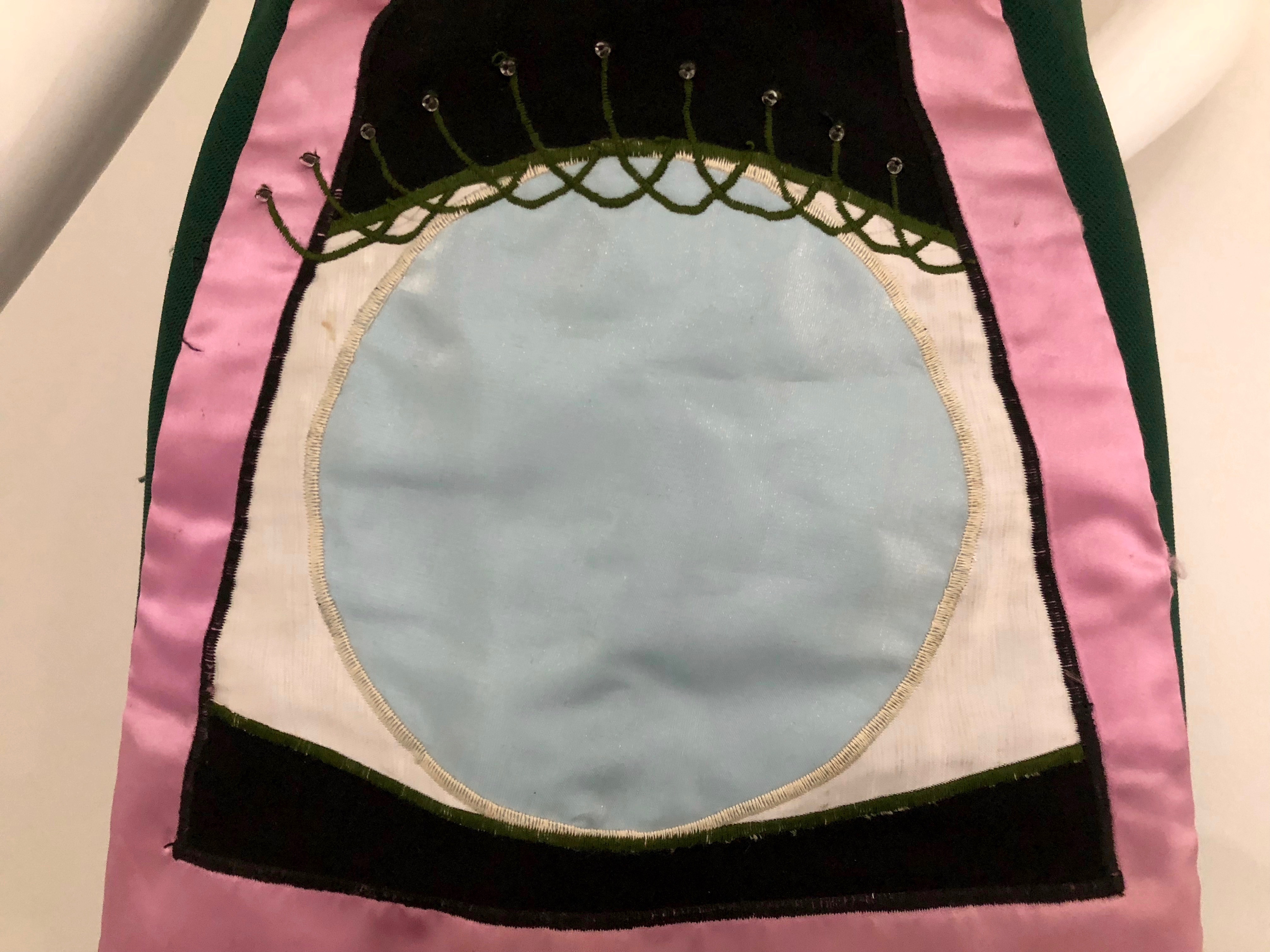
(Another of Delaunay’s designs worn by Tristan Tzara in a 1923 production of The Gas Heart inspired the costume that Bowie wore on American television show Saturday Night Live in December 1979. It was a hard plastic sculpture that completely encased Bowie’s legs, which in turn inspired singer Klaus Nomi’s iconic space tuxedo. Both Bowie’s and Nomi’s suits were made at the famous New York costume shop, Brooks Van Horn. Nomi’s monochrome outfits became infamous 30 years later – adapted by director Tim Burton for Johnny Depp’s look in the film Edward Scissorhands, used as the basis of Jean-Paul Gaultier’s Spring 2009 couture runway show, and endlessly pillaged by Lady Gaga.)
There is an unreleased recording of ‘1984’ with Bowie backing Lulu’s lead vocals with his own voice, and on sax.
SORROW
For this Merseys cover song from PinUps, Bowie appears on the parquet floor all in white, resembling a pawn in a chess game. He wears a stunning all-white Burretti suit with satin lapels and white tie. The jacket has gorgeous flared sleeves and pointed cuffs. He accessorizes with an upside-down white carnation pinned to the lapel and matching white acrylic fingernails. Bowie performs ‘Sorrow’ in the studio. He sings to Salvador Dali’s muse Amanda Lear, (who was Roxy Music’s cover girl on For Your Pleasure, walking a panther on a leash). Amanda was billed as ‘Dooshenka’ for the performance. Wearing a silver and black Natasha Korniloff creation, Amanda wields a long pole wrapped in tinsel. She manipulates cobwebbed, dancers, meant to represent the passing of time, on a chessboard represented by the squares of a parquet floor. In the outtakes, Amanda and David banter, quoting lines from Alice in Wonderland.
EVERYTHING’S ALRIGHT
The first song to be filmed was ‘Everything’s Alright’ from the PinUps album. The band included Spiders from Mars Mick Ronson and Trevor Bolder on guitar and bass, and drummer Aynsley Dunbar (originally from The Mojos, who had a hit with the same song in the 1960s.
Mark Carr Pritchett was on rhythm guitar. Mark had been the singer in Bowie’s pre-Spiders side-project band, Arnold Corns. Freddie Burretti was the intended singer. When it was determined that Freddie could not sing, Mark took over on vocals. (It is Mark’s guitar that Bowie is holding on the cover of the Ziggy Stardust album).
Bowie wears bright yellow three-quarter trousers, a purple satin top with multi-colored beaded collar, and yellow platform shoes by Pelican footwear. In 1973 Bette Midler urged Bowie to buy the yellow ‘palm tree’ wedge shoes with tropical motif – but she was too late – his ‘Jean Genie’ promo film co-star Cyrinda Foxe had previously taken him to the same shop (Pelican footwear in New York) and he already had bought them. Bette told Bowie, ‘With those shoes, and that chicken on your head (referring to his red Ziggy hair) you’ll take Manhattan by storm!’
SPACE ODDITY
Ronson and Bowie are intermittently obscured by a film of a rocket lift-off, and scenes of outer space.
The ‘Space Oddity’ suit by Freddie Burretti is made of heavy, stiff metallic silver fabric with stripes in hot pink, silver and electric blue. The sleeves have brightly accented sculpted shoulders, with thin orange and silver stripes alternating with thicker lime green stripes. Stripes also adorn the thick pointed collar. The wrist and waistbands of the jacket are elastic for a tapered look. Capri pants with wide stripes in hot pink, blue, and thinner silver stripes complete this bomber style suit, which Bowie wears tucked into knee-high red patent PVC boots on high black plastic platforms. Bowie’s boots were a copy (made by Stan Miller of Greenway & Sons) of a pair of Kansai Yamamoto originals that David had seen in an article titled Explosion From Tokyo in Harpers and Queen magazine. (The Kansai boots he saw were black with red platforms.)
Burretti’s zip-up jacket and matching trousers descend from his design of Ziggy’s iconic ‘Starman’ (on Top of the Pops) suit made of quilted rainbow patterned fabric. Burretti had also made solid colored suits in the same style in velour fabric for the Spiders From Mars for their Top of the Pops appearance: Woody and Trevor’s were pink and pale blue. Mick Ronson was stunning in gold velour.
I CAN’T EXPLAIN
David’s cover of The Who song also appeared on his album PinUps. Bowie wore a fabulous creation made by Natasha Korniloff. The ‘Angel of Death’ is a red vinyl bodice with red and black spangles and feathers. It was accented with with fabulous black PVC thigh-high lace-up stiletto-heeled boots. The outfit is accessorized by two black-feathered wristbands and one gold flower earring. This is also worn in the finale, ‘I Got You Babe’ with Marianne Faithfull.
The outfit was displayed at the V&A’s David Bowie Is exhibition from 2013-2018. It was missing the boots.
I have since found out the fate of the thigh-high lace-up boots!
Former Mainman Artiste Jayne (formerly Wayne) County recently told me that she was in possession of Bowie’s lace-up stiletto Floor Show boots for years, until “They got thrown out on the street while I was in London, as Leee (Black Childers) didn’t pay our NYC rent as he was supposed to do!”. This was in the mid-70s when Wayne County and The Electric Chairs played in England. Bowie had left the boots in the Mainman office and had given them to Leee who had asked for them.
(Jayne also had some of Iggy Pop’s outfits that she got from Mainman as well. “I altered them and wore them for my 82 Club appearances). She can be seen wearing a pair of Iggy’s infamous gold gloves in a photo from Club 82.)
TIME
The live 1980 Floor Show version of the song is included on RARESTONEBOWIE (1995) and is notable for the censored lyric (“…falls wanking to the floor…”).. The lyrics, ‘screw’ and ‘goddam’ were edited from the TV broadcast.
Cob-webbed dancers styled by Natasha Korniloff prance around Bowie, denoting the passage of time. They are wearing costumes that Natasha had previously made for the Astronettes, who danced behind Bowie at his London Rainbow concert in 1972. (Bowie wears a similar, more spectacular gold webbed outfit for his next song (‘The Jean Genie’).
Bowie’s shiny blue asymmetrical one-sleeved, one-legged costume with orange, pink, red and gold flames of satin on a shimmery silvery blue background is reminiscent of Kansai’s knit body suits created for Ziggy. Three ‘fringed’ panels with flames, backed by gold satin dangle from one long-sleeved arm. Worn with two thick bangle bracelets matching the outfit’s metallic fabric – one gold and one blue – doubled up on Bowie’s left wrist (over his silver Peruvian wedding bangles). Two thick Kansai bangles also adorn his right ankle. David’s long acrylic fingernails are painted silver. And he is barefoot.
Many years later, this iconic costume was discovered by chance by New York stylist Sara Hodgson, head of popular entertainment at Christies London while hunting around costume shops and flea markets. It was sold at auction in April 2007 via Christies in London for 10,800 pounds ($21,500) to the Hard Rock Café, Piccadilly which paid almost double the 4-6,000 pound pre-sale estimate.
The auction lot details described the costume: “a one-piece costume of asymmetrical design, blue ground with silver nylon thread weave, appliqued on the body and leg with a flame design in orange, red, yellow, gold and pink.”
THE JEAN GENIE
Natasha Korniloff had designed spider-webbed outfits, for Lindsay Kemp and his dancers (the Astronettes) who performed in Bowie’s live Ziggy Stardust shows at the Rainbow in London in August 1972.

Two gold mannequin hands wearing black nail polish were added to a more spectacular shimmering gold version of the Astronettes’ costumes for the Floor Show performance of ‘The Jean Genie’. The mannequin hands appear to be grabbing Bowie’s chest from behind. Bowie wears one fingerless glove. His own acrylic fingernails are painted bright red.
The hands were inspired by a jacket worn by David Clark Allen (of the band Carmen, whom Bowie included on the Floor Show) also had a jacket with one hand sewn onto his shoulder to look like it belonged to someone standing behind him.
Angela Allen-Barr (Carmen): I’m pretty sure it was my brother who pioneered the stuffed stocking hand look, and obviously Bowie liked it and took it on.”
The mannequin hands were inspired by a member of the band Carmen, who appeared on the show, as told in our exclusive interview conducted for my ‘Bowie 1980 Floor Show’ Facebook group.
(Excerpt) It seemed that for a short period David Bowie started to dress like Carmen? He wore a beaded bolero jacket with satin shirt, for instance, and later some Spanish style hats. Was that strange to see?
Angela Allen-Barr (Carmen):“I’m not sure how the others felt about it, but I thought it was pretty flattering, really. Bowie the artist was always on the look-out for new images, characters, personalities, worlds to take on and turn into something fantastical for the stage. I always thought he was primarily a performance artist at heart – he just also happened to write amazing songs. I saw a 70’s photo of Bowie where he was wearing a top with two fabric hands sewn onto it. David (of Carmen) also had a jacket around that time with one hand sewn onto his shoulder to look like it belonged to someone standing behind him. He had it custom made by a guy working in Kensington market. I’m pretty sure it was my brother who pioneered the stuffed stocking hand look, and obviously Bowie liked it and took it on.”
– Bowie 1980 Floor Show Facebook group
David’s costume was altered by the censors. A third mannequin hand, holding his crotch was removed. NBC were concerned that the suggestively placed hand was too shocking for American audiences. When the third hand was removed, a revealing black jockstrap was exposed. The film crew was then instructed to film above Bowie’s waist during this song – a special achievement he shares with Elvis Presley!
Natasha adapted the fishnet outfit from Ballet Rambert’s performance of Ziggurat in 1967. Rambert is Britain’s oldest dance company formed in the 1920s. For the Ziggurat performances, the dancers crocheted their own costumes. (The dance moves of the cob-webbed dancers in the song ‘Time’ during the 1980 Floor Show closely resembles the choreography of Ziggurat). Bowie’s mime teacher and later his colleague, Lindsay Kemp saw Ballet Rambert perform at the age of 17 and soon after hitchhiked to London to audition for the troupe.

“I did one particular song, can’t remember what it was now but I had a strange kind of string knitted costume made with three hands on. Two of them on my chest, looking like I was being gripped from the back…And a third one on my crotch. I nearly started a riot with the Americans. They said: “Oh we can’t show that, that’s subversive.” We went through hell, so I had to take the hand of my crotch. And then of course they didn’t like the black pouch piece that was down there, that the hand was stitched to…so I had to change all that. So, like the ‘Diamond Dogs’ thing that they airbrushed the dick off, I was having more erasure problems. It followed me all through the Seventies. It’s funny that I can remember the costume and not the song, totally indicative of what the time was like.”
– Bowie, 2002
Bowie had definitely seen and was inspired by two costumes in the film Barbarella; one worn by Jane Fonda and one worn by Anita Pallenberg as the Black Queen, designed by Jaques Monterey. The costume worn by Anita Pallenberg resembles Bowie’s outfit. It has two shiny gold hands above her chest and is also worn with elbow length gloves!
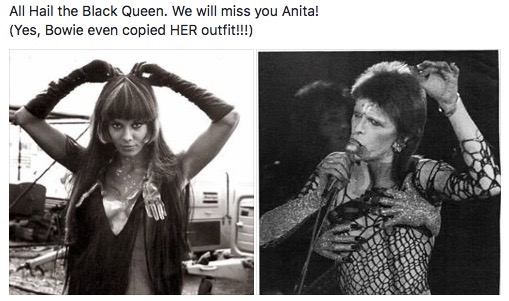
Barbarella had a big influence on a lot of people in the rock world. Zappa visited the set… Anita Pallenberg was in the film, telling the Rolling Stones about it every day, and Jimi Hendrix painted a mural in Electric Lady Studios paying tribute to the movie.
(Side note): As the character Barbarella, Jane Fonda adorns a ravaged outfit when she crash-lands on a frozen lake. It’s all torn up because the area is inhabited by evil twin children, who cut her clothing with their razor-toothed dolls! She is saved by Italian actor Ugo Tognhzzi (who later starred in La Cage Aux Folles). His character’s name is Mark HAND and it’s his job to capture the out of control children. Some of Jane’s costumes were inspired by Paco Rabanne fashions, but all were created by genius costume designer, Jaques Monterey, who worked with Director Roger Vadim.
And then, there’s Barbra Streisand’s hands-on brazier from The Owl and the Pussycat designed by Ann Roth (1970).
(Natasha later designed Bowie’s Stage tour suits, and his Scary Monsters Pierrot suit.)
I GOT YOU BABE
A backless nun’s habit with a jewel encrusted headpiece was created for Marianne Faithfull, which fully exposed her bum. David and Marianne sang a duet of Sonny & Cher’s ‘I Got You Babe’. Bowie reprised the ‘Angel of Death’ costume. It was really too nice not to wear it twice! Bowie warned the audience – “This isn’t anything very serious. It’s just a bit of fun – we’ve hardly even rehearsed it.”
“She was wearing a nun’s habit with no backside and black stockings. I’ve got that clip at home, and it is fantastic. But they wouldn’t show it in America. It was felt to be beyond the pale. Madonna, eat your heart out!”
– Bowie 1993
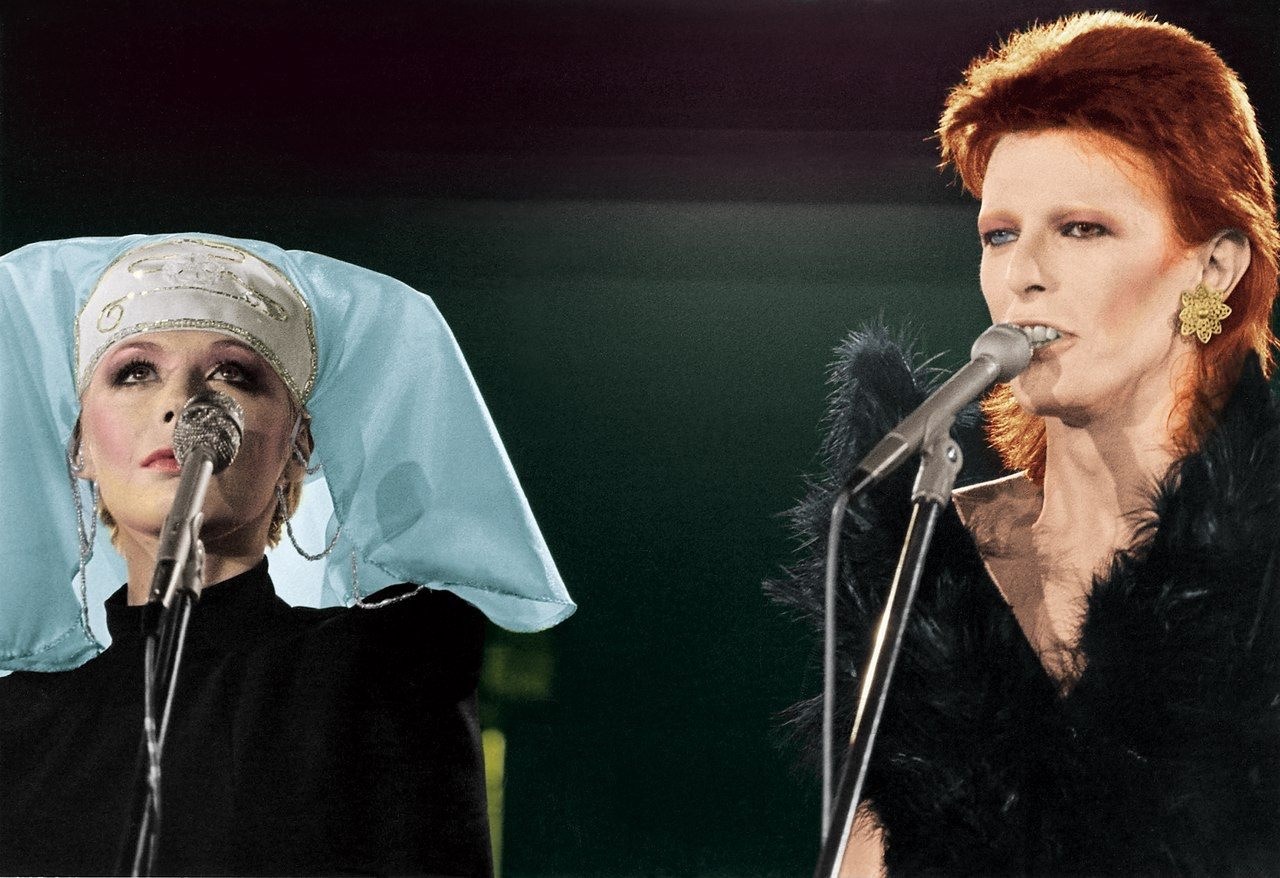
“I did a couple of songs on my own and I got to duet with David on ‘I Got You Babe’. Interesting headgear. I think I’m supposed to be a nun. The Troggs took part as well, but the audience was made up of members of David’s fan club and I don’t think they were interested in the rest of us. I can’t remember how I got involved in the show. I’d never even met David before it. It would be nice to work with him again though.”
– Marianne Faithfull
“As charismatic and fun as DB was to watch, my outstanding memory of that day was Marianne Faithfull. I was standing around waiting in the darkness of the Marquee, done up in full flamenco costume and makeup, when a seemingly endless coterie of minders and bodyguards brushed by me. In the center was a tiny woman of unearthly beauty who seemed to literally glow as if she was an angel with a halo going at full blast. She floated by serenely, taking the light with her. She was on her way to the stage to film her duet with Bowie, high as a kite and truly magical.”
– Angela Allen-Barr (Carmen):
ROCK N’ ROLL SUICIDE
During ‘Rock N Roll Suicide’ the word ‘suicide’ was bleeped. This was because earlier that year (1974) a boy had died in the USA trying to imitate part of Alice Cooper’s stage act.
The final song on the Ziggy Stardust… album, ‘Rock N Roll Suicide’ was performed but not included in the broadcast. The song is based upon Jacques Brel’s ‘Jef’, from his eighth studio album Ces Gens-Là (Those people, a.k.a. Jef) released in 1966.
Bowie had seen the musical revue Jacques Brel is Alive and Well and Living in Paris in 1968. The cast recording is one of Bowie’ top 25 albums, as he cited in 2003 (Confessions of a Vinyl Junkie”, Vanity Fair).
David famously recorded Brel’s compositions ‘Amsterdam’ and ‘My Death’ – the latter of which he performed in concert, most notably at his last performance as Ziggy Stardust on July 3, 1973 at Hammersmith Odeon.
No Jef you’re not alone
But stop crying
Like that in front of everyone
Because half an old woman
Because a fake blonde
Let you down
No Jef you’re not alone
BOWIE’S SKETCHES
The Brooklyn installment of the V&A’s David Bowie Is exhibition includes some incredible artifacts – David’s sketches for the 1980 Floor Show, seeing the light of day for the first time! David storyboarded the opening Erte-style credits, and meticulously designed the parquet floored sets and costumes!
David’s drawing of the keyhole costume worn during ‘1984/You Didn’t Hear it From Me’ indicates that it was meant to have a keyhole motif at the top of some sort of boots or leggings instead of the plain green one-piece that it became.
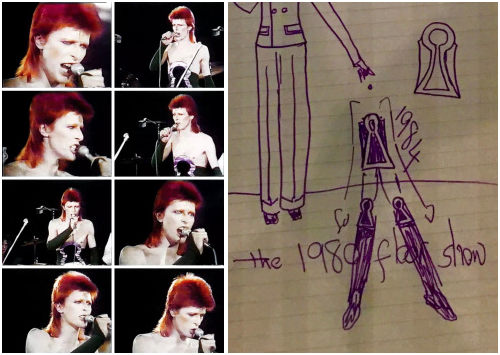
The webbed ‘Jean Genie’ costume is first drawn without mannequin hands attached, but in another sketch, he indicates that the hands can be purchased at ‘prop shop on Church street’. (We know that three hands were purchased, but one was removed due to TV censorship).
The red PVC/black feathered Angel of Death is clearly marked by David to be worn with red nail polish.
David sketched the flaming fringed panels of the blue one-legged ‘Time’ outfit. But frighteningly, a sketch shows a horse tailed jockstrap and hoofed feet (to be worn with a naked torso) – a satyr style costume which was thankfully not made, nor was another with an enlarged alien head!
THE FLOOR SHOW GIRLS
AMANDA LEAR
Our hostess, “Dooshenka”. Amanda Lear was born Alain Maurice Louis Rene (a.k.a. AlainTapp) in Saigon on 18th November 1939.
Joanna Lumley’s character Patsy Stone in Absolutely Fabulous (AbFab) is based on Amanda Lear. Amanda was asked to play the part of Patsy but turned it down laughingly, saying she’d “already lived it“.
Bowie had seen an original Erté painting in Amanda’s apartment, which inspired him to position the 1980 Floor Show spider-webbed dancers in the style of Erté’s Art Nouveau alphabet, spelling out the name of the show at the intervals.These scenes (and brief clips of Bowie) are NOT included in the 6-DVD set including other outtakes. The theme of the 1980 Floor Show was ‘time’. Here are the never before seen outtakes of Amanda introducing Bowie on The 1980 Floor Show with a convoluted monologue about time travel!
WATCH HERE:
Amanda Lear:
1960s: Model in Swinging London, strutting the catwalk for Ossie Clark, Coco Chanel, Antony Price (with cohorts Joanna Lumley, Twiggy and Pattie Boyd Harrison…
Salvador Dali’s muse. Fetish-clad Roxy Music cover girl (For Your Pleasure).
Dated Bryan Ferry, Brian Jones and David Bowie.
Friend of Guinness Heir Tara Browne (“He blew his mind out in a car” – The Beatles, “A Day In The Life”).
Movie star (Le Defi – Dance Challenge, 2002).
Disco queen (my personal favorite: “Chinese Walk” 2011).
TV show host
Impressionist Painter.
Gaultier runway model (2012).
Amanda is an international 15 million album/ 25 million singles seller. Her 17th album in 2014 was a tribute album to Elvis Presley. In May 2016, she released another album, Let Me Entertain You.
Still looking ABSOLUTELY FABULOUS!!!
And all of this is just the tip of the iceberg!
Will somebody please make a biopic of Amanda Lear’s amazing life??!!
In Amanda Lear’s book, Persistence of Memory – A personal Biography of Salvador Dali (1987), Amanda talks about her relationship with Bowie, and her appearance on
The 1980 Floor Show.
Amanda remembers Marianne Faithfull calling her, saying that she was with ‘a fan of mine who is dying to meet me’. Then Bowie got on the phone and said, “Hello, I’m David Bowie I’d like to meet you. I’ve seen your photo on the Roxy Music album cover. Maryann has told me all about you.”
David sent a car to take Amanda back to his flat in Maida Vale. A smiling Marianne answered the door advising as she left, “Be cool darling, he is crazy about you. He’ll be putty in your hands.” Amanda describes David as “a man as pale as death with dyed red hair, shaved eyebrows and eyes outlined in black.” He was “dressed in apple green, resembling a sickly Peter Pan.” He was extraordinarily sweet. They discussed Dali and surrealism. (Amanda was Dali’s friend and muse).
Amanda and David joined Mick and Bianca Jagger at Tramps for a meal, and then went to the cinema, holding hands like young lovers watching a Muhammed Ali fight live from NY. They slipped out and went to Amanda’s place for their first night together.
They realized that her bay window faced the back of Oakley Street exactly where Bowie was moving into a small 2-story house the next day. The new neighbors had dinner every night, and discussed Science Fiction, comic strips, German films and William Burroughs.
Soon David mentioned his wife and child, saying “You’ll get on very well… Angie’s a super girl. She’s not jealous at all if she knows I’m happy.” Amanda says, referring to him playfully, “My dear Martian may have been unfaithful to his wife by sleeping with me, but he also kept a blonde boyfriend in the basement of his house where he designed his stage costumes.”
David invited Amanda to host the 1980 Floor Show for American television. She was asked to sing on the show as well as present it. He also asked her to write her own dialogue. Amanda said the costumes would be as weird as possible. She decided to appear as the Queen of Spades while David dressed all in white looking like a pawn on a giant chess board.
Amanda wanted to include quotations from Alice in Wonderland and wear a Pierrot costume and also a Carmen Maranda outfit. The makeup was done by Barbara Daly “as carefully as for a fashion session.” Amanda proudly recalls, “Americans found it far out and wanted to know the identity of the mysterious woman who presented Bowie and introduced Marianne Faithfull as ‘Marianne Facefull.’ I even received fan letters.”
Amanda brought Dali to see David’s Radio City performance, but he never got into Bowie. Dali preferred the more extreme theatrics of Alice Cooper.
David inspired Amanda to become the first decadent female rock singer – a female Bowie. They decided to work on Amanda’s rock singing career – exactly what she wanted. David’s management (Mainman) signed Amanda and promised her the moon. (We have heard this story many times before!) They sent her to voice and dance classes. She still slept with David every night. Angie took her shopping. It was a strange situation.
In March, Bowie moved out of the house on Oakley Street.
“My Martian had sailed for New York where he moved into the sherry Netherland hotel not far from Saint Regis were Dali held court. I flew first class, courtesy of Bowie to a suite at the Saint Regis and was received as a star. David’s record company gave a lunch in my honor. Dali found the company vulgar and insipid. He was worried about me.“
Pictures of Amanda were hung in the Park Avenue offices of Bowie’s manager. Andy Warhol published an interview with her in Interview magazine.
David was preparing for his American tour to support his new album, Diamond Dogs). Amanda took him to see Fritz Lang’s film Metropolis on his birthday – a revelation for Bowie. He decided to see other films by German expressionists and spoke of moving to Berlin, and based his new stage sets on the film Metropolis.
Meanwhile, Angie was jealous she wanted to get into show business, but David’s manager was only interested in Amanda. But In the end, Amanda was disappointed. Her recording plans came to nothing – another Mainman casualty. David went off on tour and Amanda returned to London, where she again went out Bryan Ferry.
The Floor Show Girls:
MARIANNE FAITHFULL
Marianne Faithfull made very few appearances in the early 70s, after splitting with Mick Jagger. The 1980 Floor Show was one of them. Marianne performed two solo songs, her hit, ‘As Tears Go By’ and ‘20th Century Blues’.
Her duet with Bowie was on Sonny & Cher’s ‘I Got You Babe’. Her outfit resembles a nun’s habit. The white satin headpiece is embellished with dangling gold beads.
We learn from people who stood behind her, that the outfit is backless, and Marianne is not wearing underwear.
Angela Allen Barr (Carmen): “As charismatic and fun as DB was to watch, my outstanding memory of that day was Marianne Faithfull. I was standing around waiting in the darkness of the Marquee, done up in full flamenco costume and makeup, when a seemingly endless coterie of minders and bodyguards brushed by me. In the center was a tiny woman of unearthly beauty who seemed to literally glow as if she was an angel with a halo going at full blast. She floated by serenely, taking the light with her. She was on her way to the stage to film her duet with DB, high as a kite and truly magical.”
Marianne was obviously in a frail, drug addled condition, which led to her living on the streets in Soho for several years, addicted to heroin, until eventually making a comeback in 1979 with her amazing album Broken English.
The Floor Show Girls:
AVA CHERRY
Ava met David when she was 19 years old, at a party for Stevie Wonder in 1972. David asked her to take him to the best R&B clubs. After appearing on the 1980 Floor Show, Ava soon became David’s lover and back-up singer during his ‘Plastic Soul’ phase. Bowie also produced an album for Ava and the Astronettes. Ava sang on Bowie’s Young Americans album with Luther Vandross. She appears on The Dick Cavett Show, singing beside Luther when David performed ‘Young Americans’, ‘Footstompin’ and ‘1984’ live on TV.
Bowie produced an Ava Cherry album, but it was not released until 2009. The song ‘I Am A Laser’ became ‘Scream Like A Baby’ and was included on Bowie’s album, Scary Monsters (1980).
WAYNE (JAYNE) COUNTY
It has long been a legend that Jayne (Formerly Wayne) County was first intended to host the Floor Show but it was decided that Wayne was not ready for prime time. (Amanda Lear took the role, as Dooshenka).
Wayne was a star of Andy Warhol’s play Pork, with Tony Zanetta who played the part of Andy Warhol. David and his wife Angie loved the play when it ran in London in 1971. The long-haired folk singer (whose current album was Hunky Dory) and his wife befriended Tony and the cast from New York. They had always wanted to meet Warhol. Tony maintains that the carnal nature of Pork and the sexual freedom and outrageousness of the Pork characters spoke volumes to Bowie. This tremendously influenced his pan-sexuality and role-playing when he became Ziggy Stardust.
Zee facilitated and witnessed Bowie’s first, very uncomfortable face-to-face meeting with Andy Warhol at the Factory upon his first visit to New York City in September 1971. The meeting was full of awkward silences. After the pre-Ziggy long-haired folkie played his new song ‘Andy Warhol’ to a very cold reception, his idol had nothing much to say. David then performed a brief mime sequence for the prince of Pop Art, which also fell flat. The only topic of conversation was his shoes. Despite Bowie’s long hair, floppy hat and baggy trousers, Warhol, formerly an illustrator of shoes for adverts only complimented his odd pair of yellow Mary Janes!
https://www.youtube.com/watch?v=9k4OnyNZK3E
(Leee Black Childers, Tony Zanetta and Cherry Vanilla gave a lecture regarding Pork’s influence on Glam Rock ‘Talk on the Wild Side’ at the Warhol museum in Philadelphia in January 2011)
The Floor Show’s theme was the passing of time. Bowie chose two other bands to perform on the show; Carmen and the Troggs.
Angela Allen-Barr (Carmen):
“When the Midnight Special 1980 Floor Show came around, Bowie decided to present it as a staged show, in which the Troggs represented the past of music, he represented the ‘now’ of music, and Carmen represented the future.
THE TROGGS
The primitive 1960s band, The Troggs (Trogladytes) performed ‘Wild Thing’ and ‘Strange Movie’.
CARMEN
Flamenco rock band Carmen performed ‘Bulerias’ and ‘Shouts of Ole’.
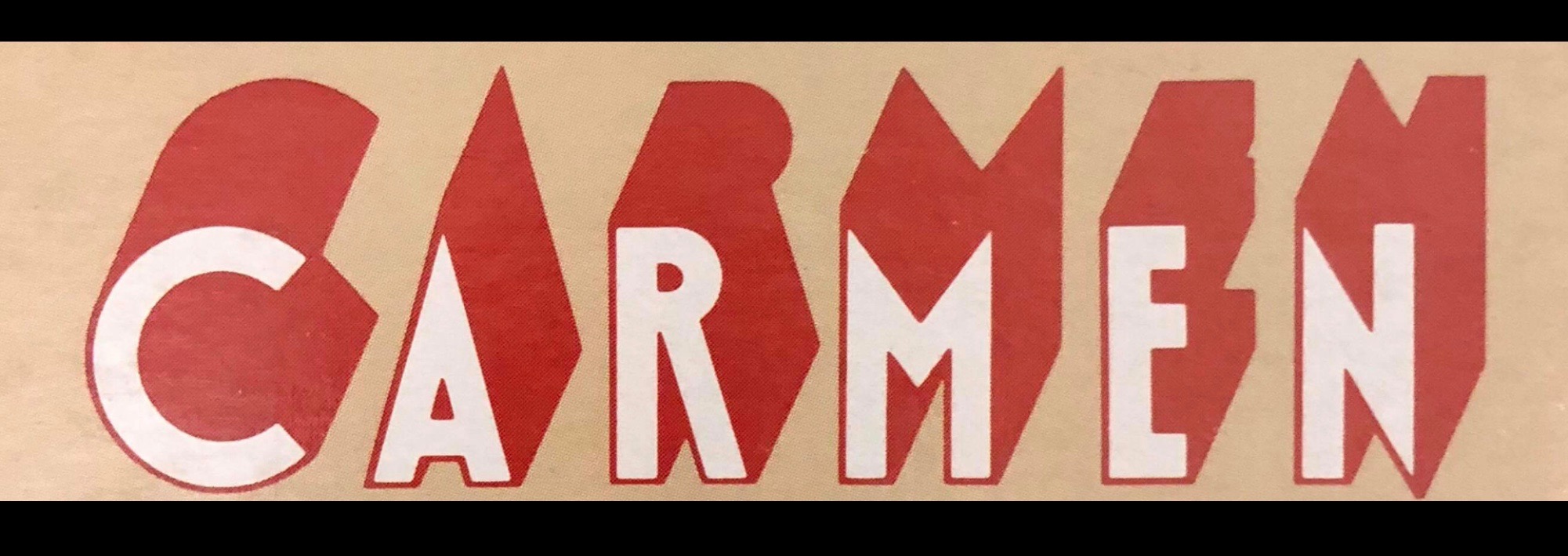
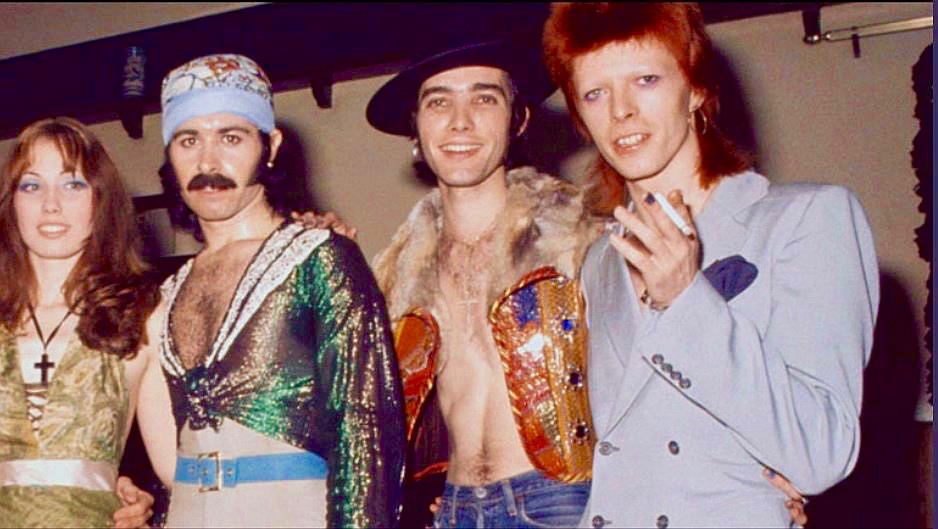
Read our exclusive Carmen interview here:
Do the Fandango! The Story of Carmen
By Madeline Bocaro & Gil Soliz © 2018
https://madelinex.com/2018/05/20/do-the-fandango-the-story-of-carmen/
© Madeline Bocaro 2018. No part of the materials available through madelinex.com may be copied, photocopied, reproduced, translated or reduced to any electronic medium or machine-readable form, in whole or in part, without prior written consent Madeline Bocaro. Any other reproduction in any form without the permission of Madeline Bocaro is prohibited. All materials contained on this site are protected by United States copyright law and may not be reproduced, distributed, transmitted, displayed, published or broadcast without the prior written permission of Madeline Bocaro.




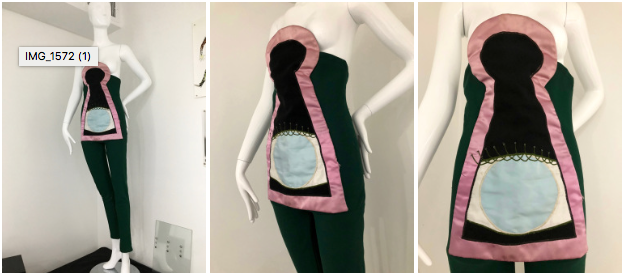
The Midnight Special
David Bowie – The 1980 Floor Show
Recorded: 18, 19 & 20 October 1973
Broadcast: 16 November 1973 (US Only)
Venue: The Marquee Club, 90 Wardour Street, Soho, London & television studios.
Producer & Director: Stan Harris
Musicians: David Bowie, Mick Ronson (guitar), Trevor Bolder, Mike Garson
(piano), Mark Carr Pritchett (guitar) & Aynsley Dunbar (drums)
The Astronettes: Geoffrey MacCormack, Jason Guess & Ava Cherry
Backing vocals:
Rocco Urbisci: Creative Consultant
Jaques Andre: Associate Producer
Matt Mattox: Choreography
Costumes: Freddie Burretti, Natasha Korniloff, Kansai Yamamoto
Amanda Lear’s costume – “Sorrow” Natasha Korniloff
Barbara Daly: Make-Up
Billy The Kid: Hair
George Underwood: Graphics
Ken Scott & Sound Control: (Robin Mayhew) Sound Mix
Set List:
1984 / Dodo/ Sorrow / Everything’s Alright / Space Oddity / 1984 (reprise) / I Can’t Explain / Time / The Jean Genie / I’ve Got You Babe (with Marianne Faithfull) /
Rock N’ Roll Suicide (unaired)






































